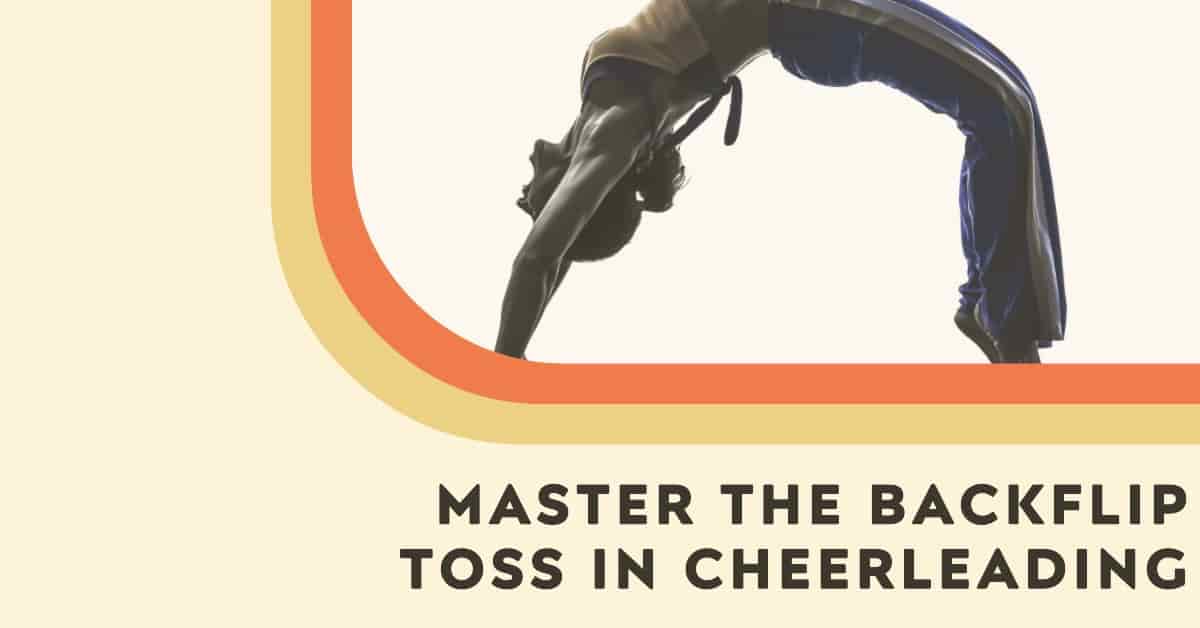Backflip tosses require flyers to jump up and perform a full backflip before landing safely in the arms of their bases below. Timing is absolutely everything for both flyers and bases – mistiming the toss by even a fraction of a second can lead to crashes and injury. Backflip tosses allow squads to showcase their most elite stunters and earn major points at competitions. However, the skill must be practiced extensively before it can be performed full-out safely. When executed perfectly, the backflip toss epitomizes the beauty, athleticism, and daring of championship cheerleading.
Preparing for the Backflip Toss
Cheerleaders must develop key physical attributes in order to achieve great height and control during backflip tosses:
- Core Strength – Tight abdominal muscles are essential for achieving tight rotations in the air. Planks, crunches, and other core exercises help strengthen the midsection.
- Leg Power – Powerful legs provide the explosive jump off the ground. Squats, box jumps, and plyometrics build lower body strength.
- Upper Body Strength – Strong arms help stabilize the body during the toss and catch. Push-ups, pull-ups, and resistance training build essential upper body power.
- Mental Preparation – Backflip tosses can be scary at first! Flyers must conquer fear, breathe, and fully trust their bases and spotters. Confidence is critical.
In addition to fitness, cheerleaders must thoroughly warm up muscles and joints before attempting any backflip stunts. Stretching, light cardio, and technique drills get the body ready to fly high.
Proper Stance and Hand Placement for Flyers
Just before the toss, flyers must set up in the perfect “load-in” stance:
- Feet shoulder-width apart
- Knees bent in an athletic stance
- Arms fully extended overhead
- Shoulders, hips, and knees aligned
This body position allows for maximum height on the toss. Flyers should grip each other’s wrists tightly if performing a group stunt. For single backflip tosses, hands squeeze the bases’ wrists tightly. This hand connection transmits critical signals between flyers and bases.
Executing a Perfect Backflip Toss
- When ready, the bases dip down slightly before explosively straightening their legs to catapult the flyer upwards. At the same moment, the flyer jumps straight up as high as possible by aggressively extending their entire body.
- As the flyer leaves the bases’ hands, they swing their arms hard in front of the body, then continue the circular swing up and back behind the ears. This forward arm swing generates rotation on the flip.
- At the peak of the toss, the flyer’s chest and hips rise up towards the sky as their core engages tight. The flyer then initiates the backflip by tucking their hips, bending knees to the chest, and lifting shins to the ceiling.
- Imagining a clock, the flyer opens their hips and extends legs at the 3 o’clock position to achieve a straight, hollow body shape. The head remains tucked as the core stays tight.
- The bases must time their catch perfectly as the flyer descends from the peak of the flip. On the way down, the bases track the flyer’s hips to spot the landing. As the flyer nears their waiting arms, the bases catch the flyer’s mid-back and legs to stabilize them safely.
Common Mistakes on Backflip Tosses
Backflip tosses take immense coordination between flyers and bases. Here are some common mistakes to avoid:
- Bases tossing too early or late – causes the flyer to crash short or drop directly on descent.
- Improper hand placement – sloppy grips lead to unintentional releases during the flip.
- Not spotting the landing – bases must watch the flyer’s hips closely to time the catch.
- Arching the back – flyers must keep a tight core, not an arched back, at the peak of the toss.
- Incomplete rotation – insufficient leg drive or arm swing causes under-rotation.
Drills and Training Tips for Beginners
Coaches should utilize the following techniques to help cheerleaders slowly and safely learn proper backflip toss technique:
- Bases use spotting techniques like hands-on assistance at the waist or under the back for the first attempts.
- Have flyers drill hollow body shapes and tight rotations on mats first before being tossed.
- Begin with very low toss heights, focusing on the right technique over height.
- Use special equipment like harnesses to get flyers comfortable with the feeling of rotating in midair.
- Emphasize steady progression – only increase toss height once past levels are mastered consistently.
- Bases and flyers constantly communicate to perfect timing on the execution and catch.
With spotters protecting them, cheerleaders can slowly get used to the disorienting sensation of flipping upside down. Each practice repetition boosts muscle memory and confidence. Coaches watch closely and provide immediate feedback on technique. Consistent, high-quality training quickly translates gains onto the competition floor.
Conclusion
A perfectly stuck backflip toss requires tremendous athleticism, courage, and teamwork. With in-depth preparation and step-by-step technique, cheerleaders can master this visually stunning stunt. While backflip tosses demand great strength and skills, the journey itself cultivates perseverance and grit. The pride of finally landing this feat is a moment that cheerleaders will cherish for a lifetime. When executed with precision and practice, backflip tosses become a dazzling showcase of the sport’s highest levels of human potential.

